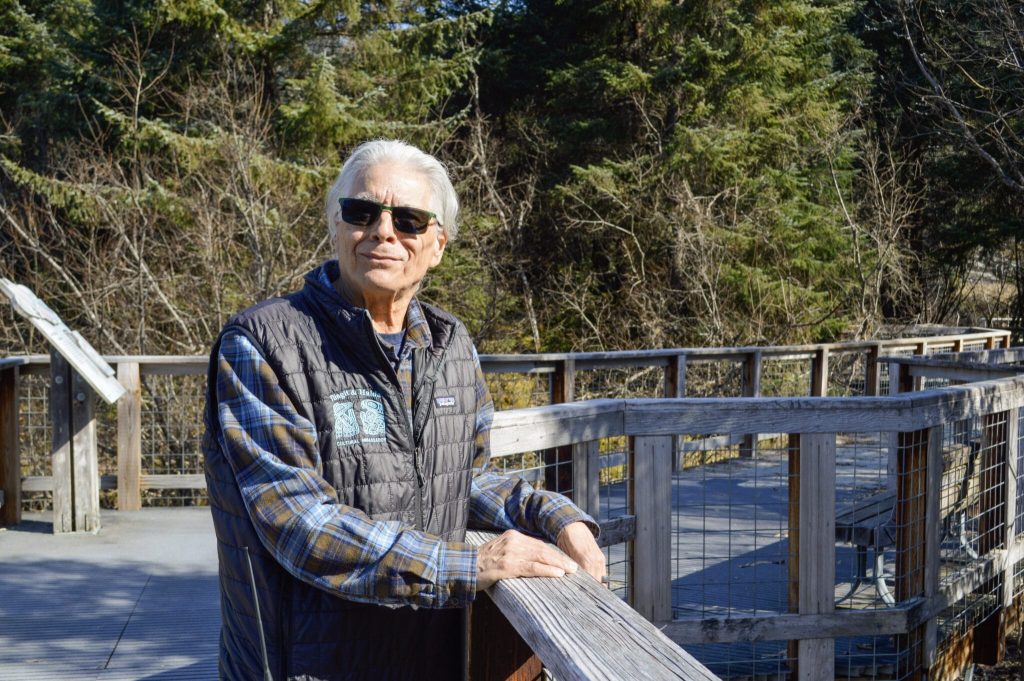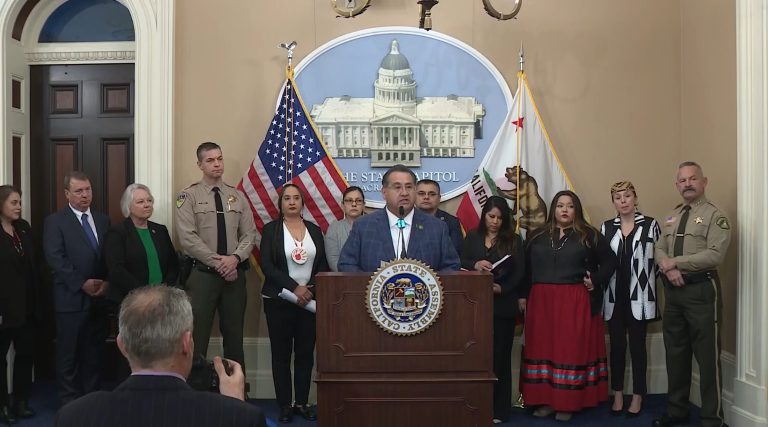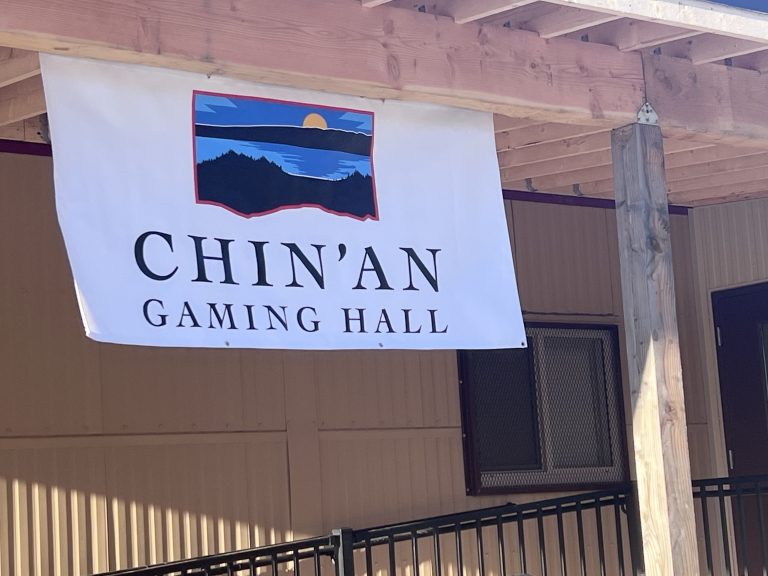Podcast: Play in new window | Download | Embed
Photo: Lee Miller is a Cultural ambassador at Mendenhall Glacier Visitor Center on April 2, 2025. The Central Council of the Tlingit & Haida Indian Tribes of Alaska program started in 2024 to teach tourists about Lingít stewardship of the land. (Yvonne Krumrey / KTOO)
The Forest Service staffing at the Mendenhall Glacier Visitor Center in Juneau, Alaska, remains uncertain due to turmoil from the Trump administration’s federal firings.
But there will be eight people working at the glacier in a different role as cultural ambassadors.
They’re all Indigenous to Southeast Alaska. Employed by the local tribe, they teach visitors about Lingít history, culture, and connections to the land.
KTOO’s Yvonne Krumrey stopped by a training session to see how they’re preparing for the quickly approaching tourist season and has more.
At the Mendenhall Glacier Visitor Center, cultural ambassadors are learning how to best represent the Lingít stewardship and connection to the glacier to the roughly one million tourists slated to visit this summer.
Saaní Liana Wallace sets off down the walkway toward Steep Creek.
“We’ll never stop talking. Join the crowd. We’re talking about plants, so Lee, who’s been here a while, is going to show me a plant that he wants us to work on.”

Cultural ambassador Saaní Liana Wallace takes a photo of a plant to identify on April 2, 2025. (Photo: Yvonne Krumrey / KTOO)
They are part of the group of ambassadors who will be at the glacier when tourists start arriving in less than two weeks.
The Central Council of the Tlingit & Haida Indian Tribes of Alaska program started last year, as a part of a co-stewardship agreement the tribe formed with the U.S. Forest Service.
It will allow people like Shaaḵ’indax̱ Jonah Johnson to teach visitors about Devil’s Club, or as it’s called in Lingít.
“S’axt”
Because there’s more to it than meets the eye.
“It looks like it’s just a harmful plant, but it’s really our medicine plant.”
In February, a wave of federal firings left one remaining Forest Service staff member at the visitor center. In a typical summer, there are about a dozen on site.
Some of the fired staff have been rehired, but there are rumors they may lose their jobs again, or accept a deferred leave offer.
Forest Service officials say they aren’t able to share any plans for staffing for the summer.
But while that’s up in the air, the cultural ambassadors are moving forward with their plan to staff the Mendenhall Glacier Recreation Area.
Lee Miller is returning for his second season. He says he thinks all of the staff at the glacier will be spread thin this year.
“But it’s exciting. I mean, every day is different, every person is different”
Miller says he loves representing the Áak’w Ḵwaan, and bringing the joy of the natural world to visitors.
“You can pass it on to them. You’re, you know, you’re coming in and you say, ‘Okay, I just saw a porcupine out on the meadow there,’ or an eagle or a heron, and, you know, just point it out to them, and they’ll ask you questions.”
Miller’s family has been here for thousands of years, but he’ll be greeting people who are seeing the glacier for the first time.
“Just interacting with them and watching them, you know it just — that made the whole season.”
And his season begins April 14, when the first ship arrives.

Margaret Katzeek brought her niece Elayna Katzeek to the Baby Raven Reads family night. (Photo: Lisa Phu/KTOO)
A group of education leaders from tribal organizations testified at a U.S. Senate Committee on Indian Affairs hearing last week, against the dissolution of the U.S. Department of Education (DOE), and for the protection of programs that support Native students.
The hearing followed an executive order President Trump signed last month to close the department.
Alaska Desk reporter Alena Naiden from our flagship station KNBA has more.
Rosita Ḵaaháni Worl, president of Sealaska Heritage Institute, spoke about the persistent lack of education funding, especially in Alaska, given the state’s fiscal situation.
“Despite these challenges, we can confidently state that through our culture-based programs that we have integrated into schools with DOE funding, we have witnessed measurable educational achievement among Native students, as well as improvements in their social and emotional well-being.”
Sydna Yellowfish is the director of Indian Education at Edmond Public Schools in Oklahoma. She says programs also help Native students who are homeless or in foster care.
“These challenges such as suicide and substance abuse, most recent bullying and sexual assault, that we have worked with our students – I feel like we are obligated to address these challenges and work with our students and our families as the best that we can.”
U.S. Sen. Lisa Murkowski (R-AK) co-led the oversight hearing. She says that the department’s programs help the government fulfill its trust responsibility.
Sen. Murkowski says that one idea to work around the department closure would be to transfer the programs to other agencies and to administer funding through the states.
However, Murkowski and several witnesses pointed out that such a transition could be detrimental to tribal sovereignty and lead to additional bureaucratic hurdles and delays.
Get National Native News delivered to your inbox daily. Sign up for our daily newsletter today.




Leave a Reply